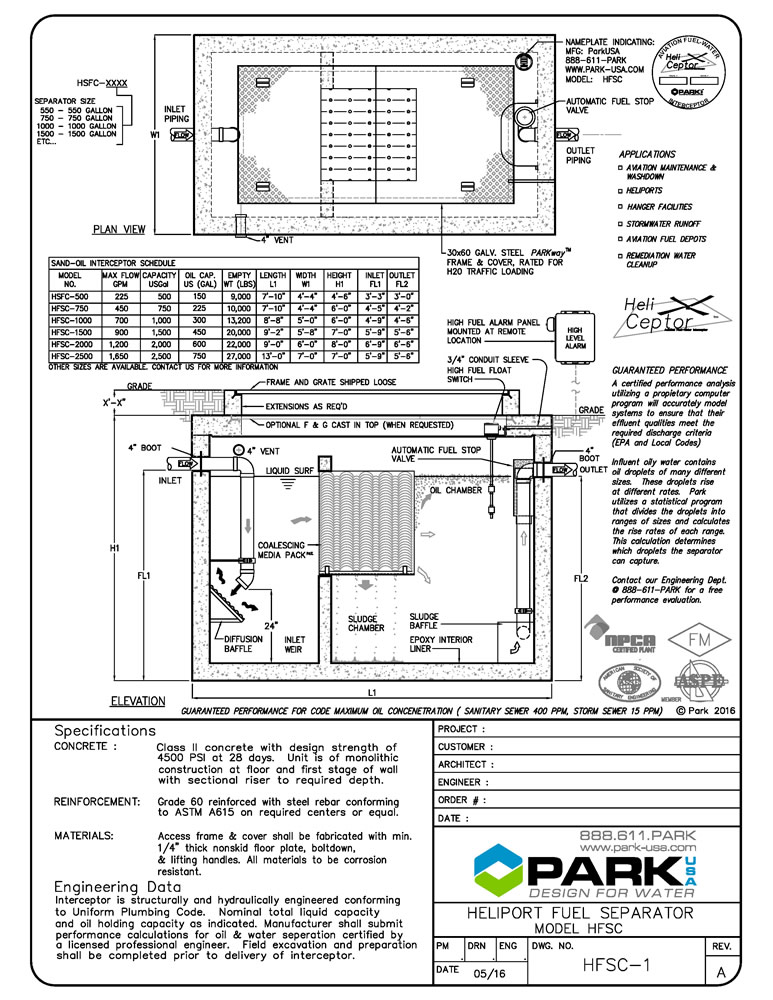
Fuel-Water Separator
•The ParkUSA® Helicepter® is a fuel-water separator for use on
heliports. In the event of a helicopter
accident or fuel spillage, the separator
will separate and retain flammable fuel
from stormwater.
Special consideration should be made
for heliports (also referred to as a
helistop, helipad, or helideck) located on
elevated structures or building rooftops.
These applications have rooftop
stormwater drainage systems that run
down within the building or marine
structure. Potential fire hazard exists
from fuel entering into the drainage
system from aircraft fueling or crash
during landing and takeoff. Fire and
plumbing codes prohibit fuel from
entering into the plumbing drainage
systems.
To maximize life-safety and property
protection, a HeliCepter® fuel-water
separator is an essential part of every
heliport.
Features
Dolor Sit Amet
- 15 year warranty
- Meets fire and building codes
- Patented design and certified performance
- Stainless steel construction
- Easy access cover with fall-protection
- Automatic service alarm system
- Easy to install and low maintenance

As precipitation falls on a heliport landing pad, the resulting stormwater runoff drains away from the pad via a plumbing
drainage system. The drainage system often drains
through a building on its way to a stormwater or sanitary
sewer. In the event of a helicopter crash or accidental fuel spill, the
runoff could contain dangerous components that put the
building and public sewer at risk for fire and explosion.
The function of a fuel-water separator is to intercept fuel
and oils from the heliport drainage system and then safely
detain it for removal. Runoff flows from the landing pad
into the drainage system and then to the HeliCepter® heliport separator.
The runoff enters the separator’s inlet chamber where any
present fuel slugs rise immediately to the surface. The
remaining fuel-laden wastewater flows through the
patented coalescing media where remaining hydrocarbon
droplets and fine solids are progressively separated. All the
separated hydrocarbons rise to the upper area of the
separator and securely detained. Downstream, the
patented fuel-stop valve prevents the release of harmful
fuels from exiting the separator. Hazardous fumes are
vented from the separator and safely away from the
building and the public sewer.
Maintenance is made easy by the automatic monitoring
system that notifies the operator of hydrocarbon high
levels. Once activated, the operator has the separator
cleaned by a qualified service company. An auxiliary
storage tank can be utilized to increase the storage
capability of the separator system.
Additional Resources
File Preview ⬎














